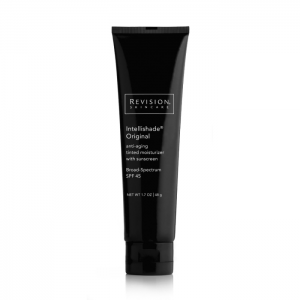Time changes our bodies in many ways, and the skin is no exception. As we age, our skin slowly loses its ability to renew itself, changing the perfect smoothness of baby skin to adult skin that can be dryer, rougher, and more prone to show damage. Time, sun exposure, and environmental toxins can all chip away at our skin health, making some conditions, such as skin cancer, more common for older individuals. By caring for and monitoring your aging skin, you can help your skin to age more gracefully and, with the assistance of your dermatologist, treat any problems that come up along the way.
What are Some Normal Changes to Aging Skin?
As we reach our senior years, our skin generally becomes thinner and drier. Thin skin, visible blood vessels, and bruising on the hands and forearms are all common and normal with aging. Additionally, the skin can tear and bleed more easily, sometimes without any obvious injury. Wrinkling is also common with age. Areas that have received the most sun exposure throughout your life, such as the face, neck, upper chest, and arms, may begin to develop deep furrows and appear darker over time. Even skin that did not receive exposure to the sun will not be immune to the effects of aging and will develop fine, cigarette-paper wrinkles over time.
Many types of benign growths on the skin increase in number as we get older, including age spots (flat dark spots called solar lentigo), warty brown growths (seborrheic keratosis), and small red or purple spots (cherry angioma). Although these are normal, they can sometimes be hard to tell from more worrisome spots like skin cancer. A visit to your dermatologist to assess any new or changing spots will give you peace of mind and help maintain the health of your skin.
Does the Risk of Skin Cancer Increase for Aging Skin?
In short, yes. Both age itself and cumulative lifetime sun exposure contribute to the risk of skin cancer. There are two main types of skin cancer, melanoma, and non-melanoma, with non-melanoma being the most common. Non-melanoma skin cancers include basal cell carcinoma, the most common type of skin cancer, and squamous cell carcinoma, the second most common. These generally start small and grow slowly over time. They can be rough or crusty and sometimes bleed without any injury. More rarely, they can grow quickly and become dangerous either locally (such as the risk of losing part of the nose or an ear) or even life-threatening in rare cases. Fortunately, these types of skin cancer are usually curable with minor surgery if caught early.
Revision Skincare Intellishade Original Broad Spectrum SPF 45Although melanoma is less common, it is the deadliest form of skin cancer. Melanoma can occur anywhere on the body but is most commonly found in men on the upper back and in women on the lower legs. It can even occur in less common places such as under a finger or toenail or in the back of the eye (retina). Melanoma usually presents as a dark brown, black, or grey irregular coloration with jagged or scalloped edges. It will grow over time and can spread throughout the body, becoming deadly if not caught and treated quickly. For this reason, it is critical to see your dermatologist for any growing, changing, or bleeding skin lesions as you age.
Although sun damage from your younger years cannot be undone, it is still important to protect yourself from the sun in your golden years. A broad-brimmed hat, clothing to cover the skin, and a broad-spectrum (UVA/UVB) sunscreen with an SPF of 30+ for exposed areas are all part of a healthy regimen for time spent outdoors. If you like to walk or work outdoors, try to get your time in either before 10 am or after 4 pm when there is less direct sunlight.
Does Aging Affect Wound Healing?
Several factors make healing slower and more difficult for older people. Circulation can slowly be damaged by age, diabetes, smoking, and the Western diet. As blood flow diminishes, so does the skin’s ability to heal. Small wounds (especially on the lower legs) can linger or breakdown into ulcers that won’t heal. It is important to take steps to minimize skin injury whenever possible such as:
- Moisturizing the skin daily with a fragrance-free cream to keep it supple.
- Monitoring the legs for injuries when bathing
- Making sure socks and shoes are free from stones, splinters, or other irritants
- Wearing protective garments like blue jeans, a thick shirt, and gloves if working in the yard.
- Modifying your living space with grab bars and floors with good traction to help prevent falls.
- Treating minor injuries or burns with antibiotic ointment and a bandage.
- Using bandages with minimal or no adhesive (like an ACE bandage) to prevent tearing of the skin when removing sticky tape.
- Seeing your dermatologist for any wound that is large, painful, or does not heal in a few days.
Is Itchy Skin Normal as You Get Older?
It is not normal to have persistent itching. If you have a rash or repeatedly itchy skin, see your dermatologist. Many conditions that cause itching are more common in older patients, however. The most common is dry skin and eczema. Gentle bathing using warm (not hot) water, a fragrance-free cleanser, and keeping showers or bath short will help prevent dryness. Moisturize daily or more often with a fragrance-free cream or lotion.
Trust Your Aging Skin to U.S. Dermatology Partners
The natural aging process can sometimes seem to cause all sorts of health changes. Although the skin does require more maintenance with aging, with proper care and sun protection, your skin will provide you with a lifetime of service. If you have questions about your aging skin, the friendly team at U.S. Dermatology Partners would love to see you. We have multiple locations throughout the country, so fill out our simple online form and a member of our team will get in touch to answer questions or schedule an appointment with your local office.
Find a location near me
or


